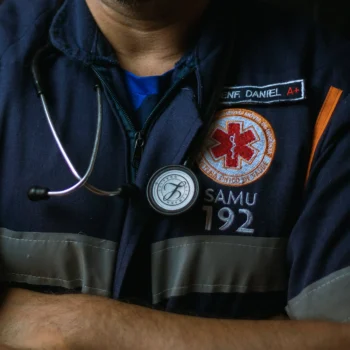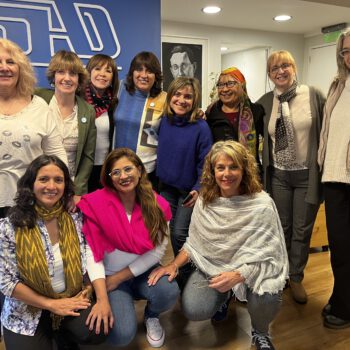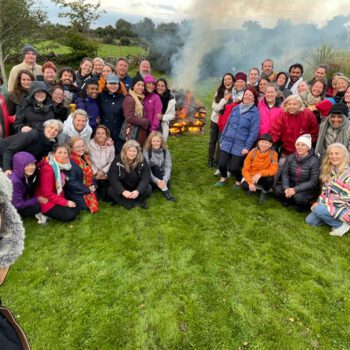“When your nervous system is well-regulated and synchronized, you’re able to participate in life, to be passionate about your work, to relate deeply and skillfully with others, and even to grow and change after traumatizing experiences.” (Thomas Hübl, Attuned)

Presence is unconditional
Presence is unconditional; our ability to be present is not. Presence is a state of being based in connection to our essential self, and it exists as life force energy within every cell of our body. Regardless of the adaptations that have become automatic in our lives, our authentic state remains the same: coherent, responsive, and connected. Possibility and freedom emerge when we remember that we are the awareness behind our thoughts and feelings.
When we are present, we are anchored in an inner state of safety. This creates a supportive container and allows for somatic and relational attunement. Our attention is focused in the here-and-now and we are in a direct, embodied relationship with the moment. At some level, presence is always available to us. Yet, very few of us live in a sustained state of present-moment awareness.
Our ability to be present is filtered through a set of perceptions and conditions that are unique to each of us. Our biography is written into our biology, and we have all learned to disconnect. This adaptation gives us a sense of safety but separates us from our authentic experience. The places we have disconnected provide us with an invitation to call ourselves home. Ultimately, presence is about connection.
If we’re not present and embodied, where are we?
We have heard Gabor speak eloquently about how our mind creates the world, and also about how the world first created our mind. As he says, “It all goes down in the mind.” So if we’re not present and embodied in the moment, where are we?
The short answer is that we are in an unconscious state of survival. Outside of conscious awareness, our minds tend to organize our present-moment experience through the lens of the past. We subconsciously filter our experience through core beliefs and psycho-physiological patterns of perception. Charged with incomplete emotional energy, these sensitized places take us into a story that we experience as our current reality. Our physiology shifts and we experience old traumas in real time through our bodies and emotions. Patterns of fight, flight, and freeze activate and specific aspects of our personalities mobilize with functional intent. Though intended to be protective, this keeps us stuck in a survival-based loop of incompletion. These patterns of perception stay with us, ingrained in the tissues and systems of our body.
A return to the present moment
When we are present and connected to our experience in the moment, we create an opportunity to complete the physical/emotional processing of the past. This liberates us from the rigidity of old adaptive patterns and opens us to greater authenticity. We move out of survival and into safety. To practice this, we need to be able to consciously shift our attention. The intent is to notice when we are not present and then call ourselves back with kindness.
For me, this often feels like uncoupling two magnets. There is a real pull to orient elsewhere and I have to intentionally bring my attention back to sensory awareness. Sometimes this comes with intensity or discomfort—there is something in the present moment that I do not want to be with. Yet the invitation is to do just that, to stay with the awareness of sensation and practice coming back into connection, even as coping mechanisms tell me to go elsewhere. Fortunately, our nervous systems typically begin to settle when we do this; we shift into safety. This is the power of attunement.
Tools for self-regulation
As we seek to build an attuned somatic awareness, it helps to be able to identify our habitual coping mechanisms. For example, I know that I need to be mindful of a shift from sensing my experience to thinking about what I am sensing. It happens so automatically that often I don’t even notice it. But as I have learned to recognize this habit and to be compassionate with its origins, I come back into sensory awareness with greater ease. Presence becomes available. I know that I am safe and can attend to whatever I am experiencing. This simple practice of tracking thinking vs sensing and then being curious about our embodied experience helps us to reconnect. We practice returning to sensory awareness and become more attentive to our own signals. We learn what the physiological state of safety is like, grounded in ventral-vagal balance. The more familiar this process becomes, the more easily we can recognize when we have left the present moment and call ourselves back again.
Authenticity depends on our being connected to and in touch with our body and our emotions.
As we become more skillful in shifting to present-moment awareness, we may also gain clarity about what happens when we move out of presence—
- Do we go into the past and become fixated there?
- Do we project Into the future?
- Are we mobilized in fight or flight?
- Are we shut down in a dorsal-vagal freeze?
- Are we gripped by specific thoughts, feelings, or memories?
- Are we orienting to the world through a perception?
This is where compassionate curiosity serves us—we are invited to notice where our attention goes, what stories and beliefs are there, and how we react to them. The more we are out of the present moment, the more perpetual our protective mechanisms become. This is how short-term traits can become long-term states, and what started out as adaptive becomes more and more restrictive over time. There is something within us that needs completion, and that completion is only possible in the present moment.
The present moment is where our power for transformation lies. Each time that we are connected in an attuned relationship and feel safe enough to be present to our experience, we create a new potential through our real-time physiology. This may take many repetitions, but change is possible. As Gabor reminds us, “No one can change the past, but everyone can change the future.”



